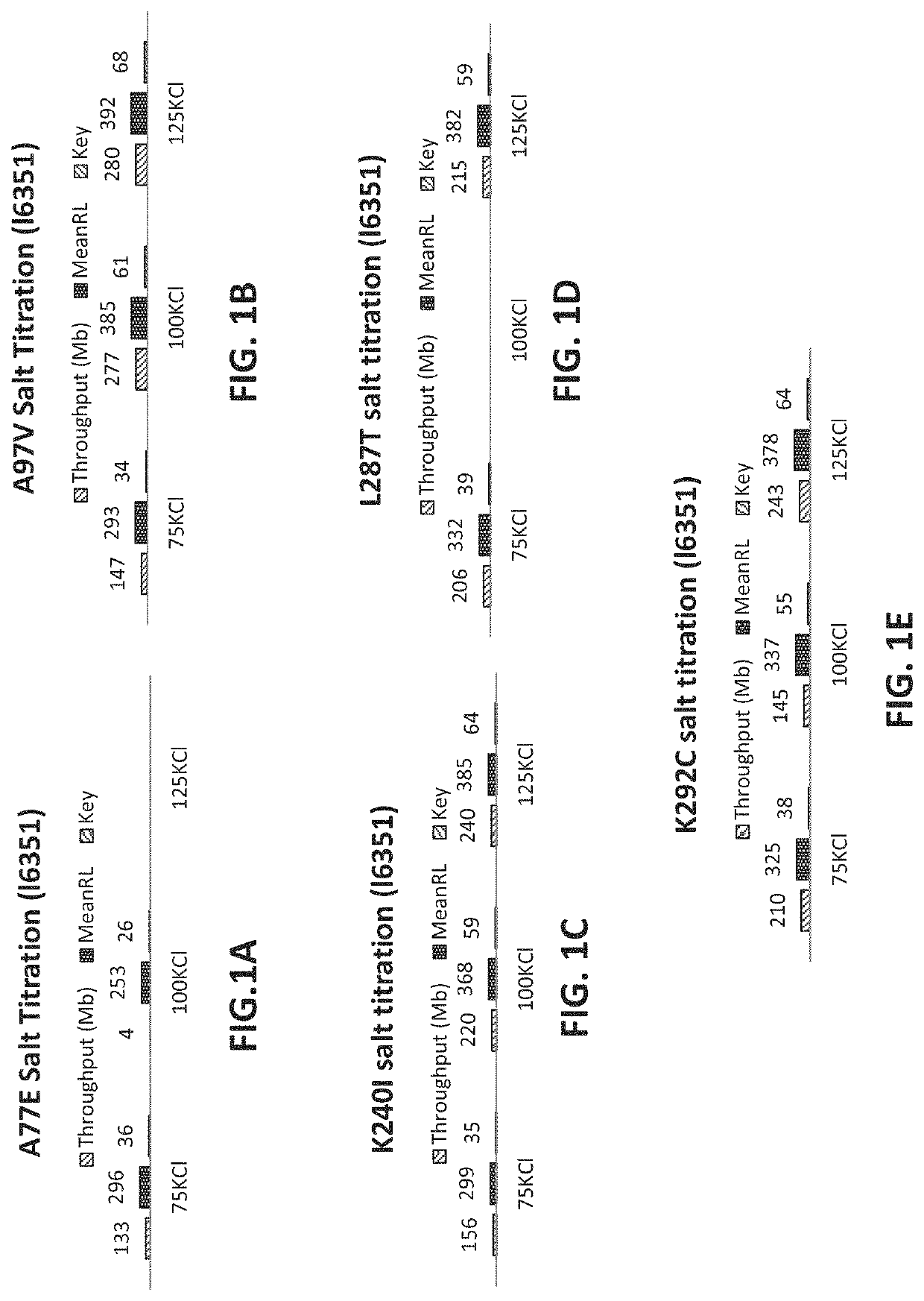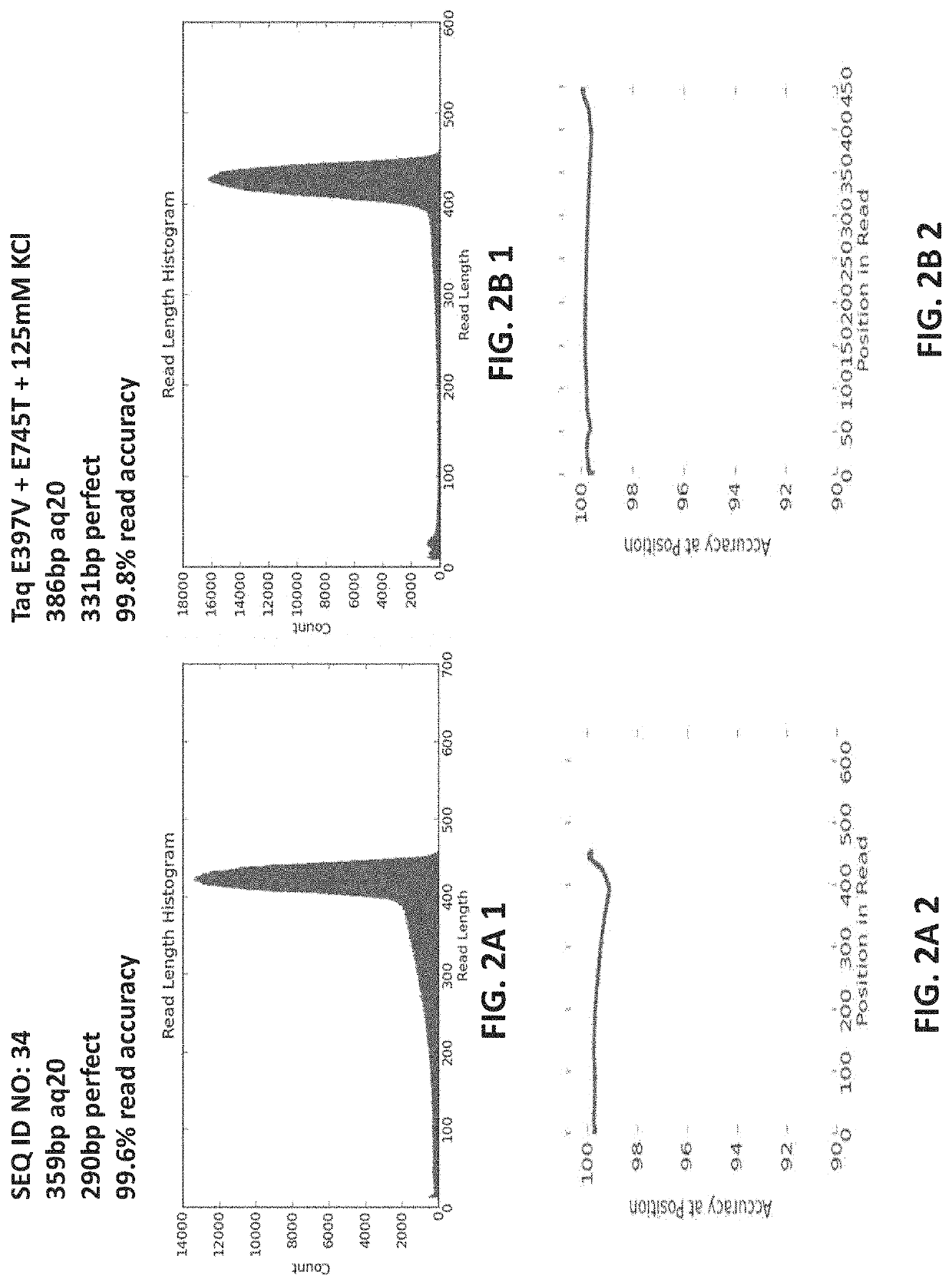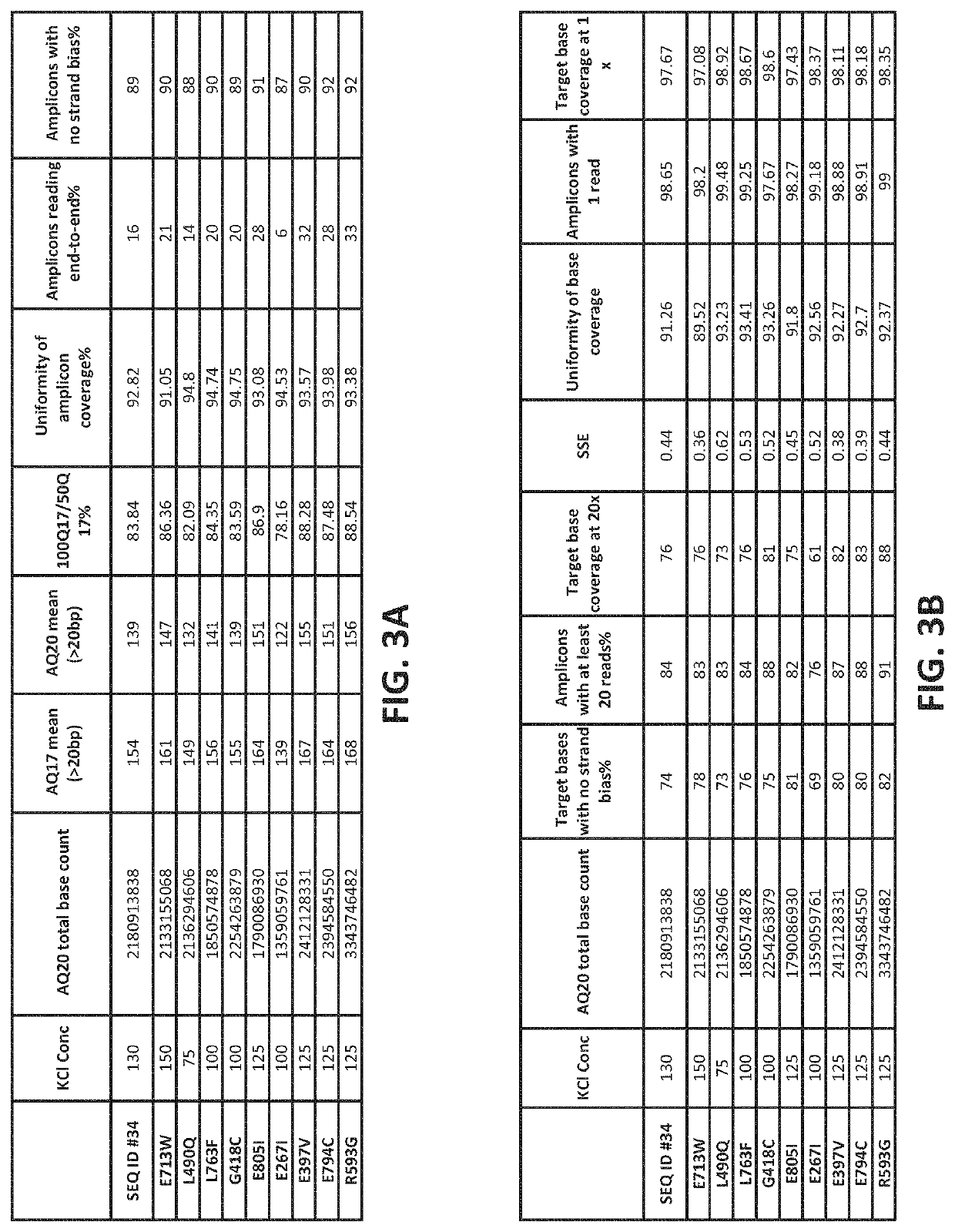Polymerase compositions and methods of making and using same
a polymerase and composition technology, applied in the field of mutant polymerases, can solve the problems of complex analysis of polymerase activity, limited polymerase performance in various biological assays involving nucleic acid synthesis or detection, and limited polymerase activity in various biological assays
- Summary
- Abstract
- Description
- Claims
- Application Information
AI Technical Summary
Benefits of technology
Problems solved by technology
Method used
Image
Examples
example 1
n & Purification of Exemplary Modified Polymerases
[0539]Amino acid mutations were introduced via site-directed mutagenesis into an exemplary reference polymerase having the amino acid sequence of SEQ ID NO: 1. In this example, wild-type full length Taq DNA Polymerase (832 amino acids in length) was used as the reference polymerase from which exemplary mutations were introduced via site-directed saturation mutagenesis.
[0540]Here, 831 amino acid residues of SEQ ID NO: 1 after methionine (at amino acid position 1 of SEQ ID NO: 1) were substituted with every possible amino acid, at each amino acid residue along the polymerase. Recombinant expression constructs encoding these modified polymerases were transformed into bacteria. Colonies containing expression constructs were inoculated into BRM media, grown to OD=0.600 and induced by adding IPTG to a final concentration of 1 mM. The cells were then grown for a further 3 hours at 37° C.
[0541]The induced cells were centrifuged for 10 minute...
example 2
n & Purification of Exemplary Double, Triple, and Quadruple Modified Polymerases
[0543]Double, triple, and quadruple amino acid substitutions were introduced via site-directed mutagenesis into an exemplary reference polymerase having amino acid sequence of SEQ ID NO: 1. In this example, wild-type full length Taq DNA Polymerase (SEQ ID NO: 1) was used as the reference polymerase from which exemplary double, triple, and quadruple amino acid mutations were introduced.
[0544]Here, modified polymerases were prepared according to Example 1. Several of the 31 clones assessed for secondary characterization were used as the basis to combine multiple single amino acid substitutions into the reference polymerase according to the method set forth in Example 1.
[0545]Briefly, clones of interest from Example 1 were assessed as possessing superior polymerase performance as compared to WT Taq DNA polymerase under identical emPCR conditions. The selected individual amino acid substitutions were then in...
example 3
Performance of Modified and Reference Polymerases in Emulsion PCR
[0550]A modified isolated polymerase comprising a mutant Taq DNA polymerase (SEQ ID NO: 2) including an amino acid substitution E397V (wherein the numbering is relative to the amino acid sequence of SEQ ID NO: 1) was purified essentially as described in Example 1. Both the modified polymerase (SEQ ID NO: 2) and a reference polymerase (SEQ ID NO: 1)(control reaction) were then evaluated for performance in emulsion based PCR reactions under identical conditions.
[0551]The library of nucleic acid molecules to be amplified under the emulsion PCR conditions included amplicons that were known to be particularly difficult to amplify under standard emPCR conditions. The library of nucleic acid molecules included 55 amplicons that included high or extreme GC content (>60% GC); 42 amplicons having high or extreme AT content (>60% AT); 299 amplicons that included homopolymer (HP) regions of differing lengths (e.g., 2 HP-9 HP); 95 ...
PUM
 Login to View More
Login to View More Abstract
Description
Claims
Application Information
 Login to View More
Login to View More - R&D
- Intellectual Property
- Life Sciences
- Materials
- Tech Scout
- Unparalleled Data Quality
- Higher Quality Content
- 60% Fewer Hallucinations
Browse by: Latest US Patents, China's latest patents, Technical Efficacy Thesaurus, Application Domain, Technology Topic, Popular Technical Reports.
© 2025 PatSnap. All rights reserved.Legal|Privacy policy|Modern Slavery Act Transparency Statement|Sitemap|About US| Contact US: help@patsnap.com



